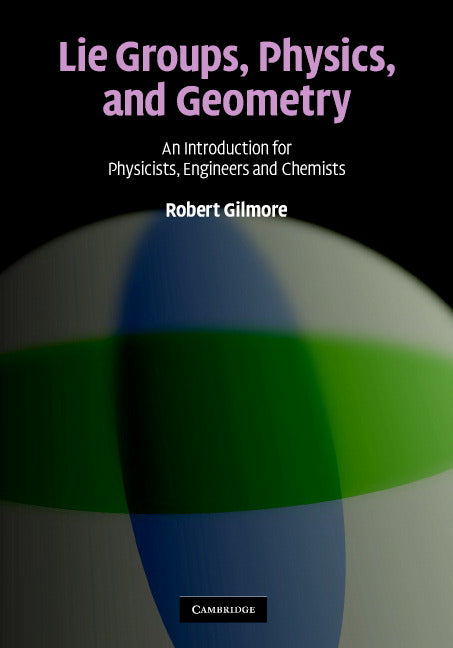Freshly Printed - allow 8 days lead
Couldn't load pickup availability
Lie Groups, Physics, and Geometry
An Introduction for Physicists, Engineers and Chemists
Introduction to Lie groups for graduate and undergraduate students in physics, mathematics and electrical engineering.
Robert Gilmore (Author)
9780521884006, Cambridge University Press
Hardback, published 17 January 2008
332 pages, 35 b/w illus. 196 exercises
25 x 18.4 x 2.1 cm, 0.81 kg
'… provides a very comprehensive introduction to the Lie group theory and its application in physics … very clear and easy to acquire and assimilate by students and young researchers. The numerous problems with which each chapter ends not only illustrate and help for understanding the presented material but also reveal new features and applications. Some new original ideas and results are also contained in the book … The book could also be useful for specialists, who want to refresh their knowledge on Lie group applications to physics. Finally it is recommended to everyone who wishes to enter into this interesting and fascinating field.' Geometry and Symmetry in Physics
Describing many of the most important aspects of Lie group theory, this book presents the subject in a 'hands on' way. Rather than concentrating on theorems and proofs, the book shows the applications of the material to physical sciences and applied mathematics. Many examples of Lie groups and Lie algebras are given throughout the text. The relation between Lie group theory and algorithms for solving ordinary differential equations is presented and shown to be analogous to the relation between Galois groups and algorithms for solving polynomial equations. Other chapters are devoted to differential geometry, relativity, electrodynamics, and the hydrogen atom. Problems are given at the end of each chapter so readers can monitor their understanding of the materials. This is a fascinating introduction to Lie groups for graduate and undergraduate students in physics, mathematics and electrical engineering, as well as researchers in these fields.
1. Introduction
2. Lie groups
3. Matrix groups
4. Lie algebras
5. Matrix algebras
6. Operator algebras
7. Exponentiation
8. Structure theory for Lie algebras
9. Structure theory for simple Lie algebras
10. Root spaces and Dykin diagrams
11. Real forms
12. Riemannian symmetric spaces
13. Contraction
14. Hydrogenic atoms
15. Maxwell's equations
16. Lie groups and differential equations
References
Index.
Subject Areas: Maths for engineers [TBJ], Engineering: general [TBC]


